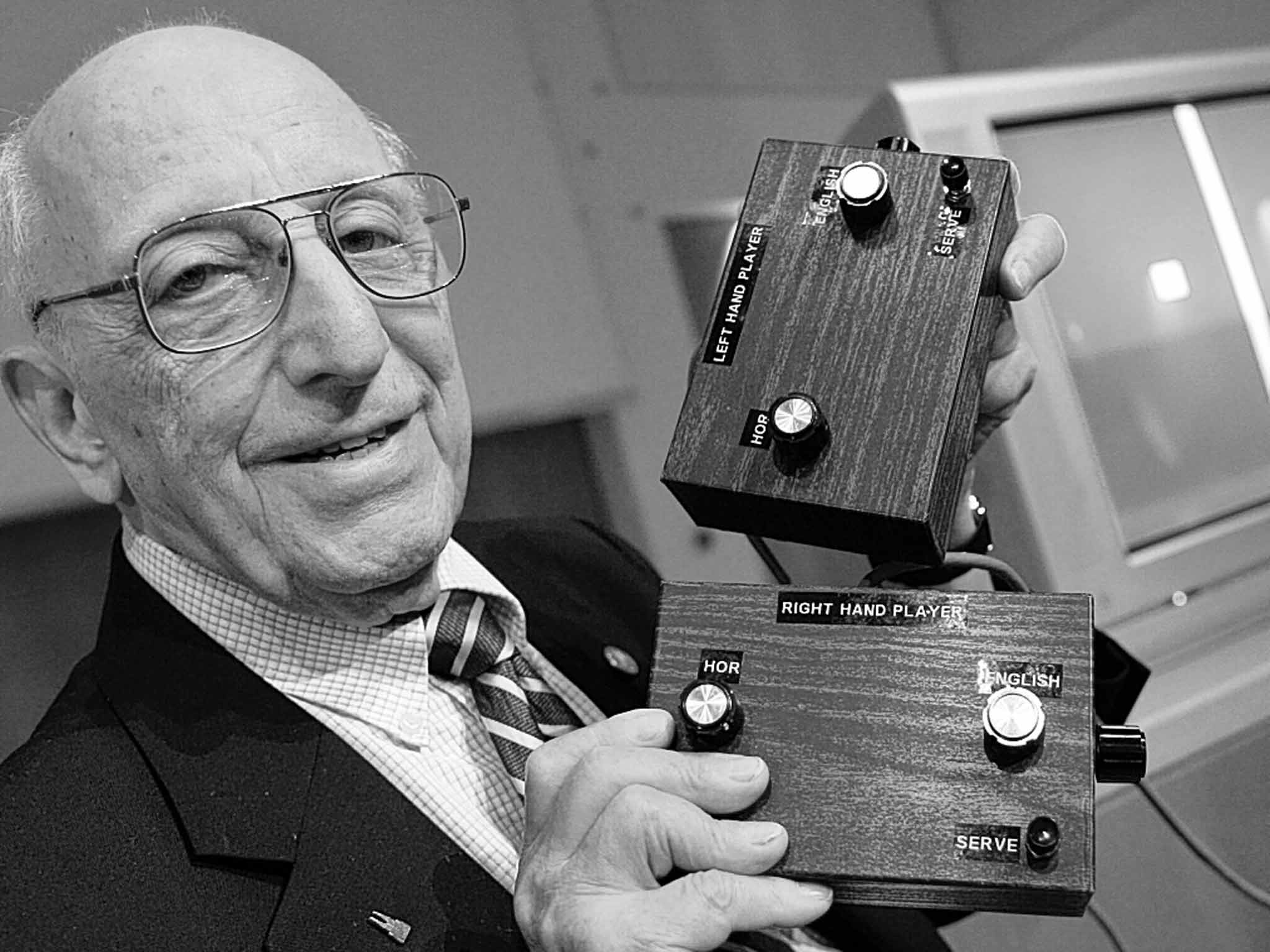Ralph Baer: The godfather of video games whose Magnavox Odyssey 'Brown Box' led the way for the Playstation, Xbox and Wii

At the dawn of the television age in 1951, a young American engineer named Ralph Baer approached executives at an electronics firm and suggested the radical idea of offering games on television sets. "And of course," he said, "I got the regular reaction: 'Who needs this?' And nothing happened."
It took another 15 years before Baer developed a prototype that would make him the widely acknowledged father of video games. His design helped lay the groundwork for an industry that transformed the role of the television set and generated tens of billions of dollars last year.
A refugee from Nazi Germany, Baer had training in electronics as a teenager. He spent his early career developing surgical equipment, loudspeakers, circuit boards and other technology for industrial and military clients. He was a division manager and chief engineer for Sanders Associates, a military contractor based in Nashua, New Hampshire, when in 1966 the company allowed him to begin work on the video-game idea as a side project.
"The object of the exercise was to come up with a device that would attach to an ordinary TV set and play interesting games," he wrote in his 2005 book Videogames: In the Beginning. "Since there were over 40 million sets in the US alone at the time, this looked like a business opportunity." Games had been played for some time on computers, but large, expensive ones in university and military laboratories.
The prototype that became the first home-gaming console, developed by Baer alongside engineers William Harrison and William Rusch, was called the "Brown Box" because it was covered with adhesive tape that resembled wood grain. Once plugged in, the console could be used to aim a "light gun" and play football, tennis and roulette games. After failing to attract interest from leading television manufacturers like General Electric and Motorola, Sanders licensed the technology to Magnavox in 1971.
The console, the Odyssey, arrived in shops the following year. The ancestor of the PlayStation, the Wii and the Xbox, it was primitive by modern standards, battery-powered and without sound. Its games, however, presaged many of the genres that remain staples today, including racing, sports and shooting.
Magnavox priced the Odyssey at $100, and the company had sold several hundred thousand by the end of the decade. Other firms licensed it from Magnavox, and one – Atari, co-founded by Nolan Bushnell, who had seen a demo of the Odyssey system and later created the hugely popular "Pong" arcade game – became one of the industry's defining companies. Atari's first home system, the 2600, sold in the millions after it was released in 1977.
The consoles were marketed as modern arcade games and gained popularity alongside traditional pinball machines and jukeboxes. In the following decades, however, play-at-home games came to dominate as competition moved the technology forward. The business ultimately evolved along the four interwoven threads – console, computer, arcade and hand-held games – that remain in place today.
Baer spoke up for the "play value" of older games even as new ones offered ever-improving sounds, graphics and storytelling. "You'll find that that kind of play is simple and obvious," he told the magazine High Times in 2004. "It's more fun, at least to older people who can't manage today's stuff. Anybody over 35 can't play today's games. Who has the patience?"
He was born in 1922, in Pirmasens, Germany. His Jewish family left for the US months before Kristallnacht. They settled in New York, where the teenage Baer, who had stopped formal schooling at 14, worked in a factory that made leather accessories. While on the subway one day he spotted an advertisement for a correspondence course promising a lucrative career in radio electronics. "I said 'sayonara' to the factory," he recalled. "I memorised the entire handbook of vacuum tubes."
He graduated in 1940 from the National Radio Institute in Washington and was a radio service technician for three years before Army service in Europe during the Second World War. Studying under the GI Bill, he graduated in 1949 from the American Television Institute of Technology in Chicago.
He continued to work in video gaming after Odyssey launched, his work for the toy firm Marvin Glass eventually led to Simon, one of the most popular American toys of the 1980s. The game deployed a series of lights and tones, challenging the player to recall and repeat them by tapping four coloured pads. It grew more difficult as the player succeeded, the play becoming increasingly frenetic.
Baer understood the universal appeal of a well-designed game. During a visit to a patent examiner's office to discuss his original system, he found himself largely ignored as his lawyer and the examiner conferred in technical jargon. "While they were bantering back and forth about the claims, I set up a small television set and my game console in the examiner's office," he recalled. "Within 15 minutes, every examiner on the floor of that building was in that office wanting to play the game."
Ralph Henry Baer, video games designer: born Pirmasens, Germany 8 March 1922; married Dena Whinston (died 2006; one daughter, two sons); died Manchester, New Hampshire 6 December 2014.
© The Washington Post
Join our commenting forum
Join thought-provoking conversations, follow other Independent readers and see their replies
Comments